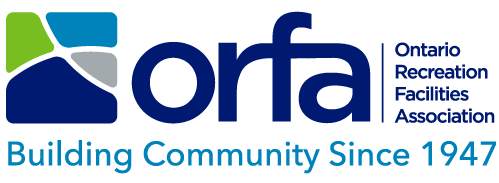- ORFA Home
- The Recreation Facility Profession
- ORFA News and Alerts
- ALERT - May 4, 2022
ORFA ALERT |
Woodchipper Safety Guideline
May 4, 2022 Action: Where appropriate, the ORFA recommends JHSC agenda item and H&S Bulletin Board Posting A recent sub-contractor worker death in Oshawa that involved a woodchipper is a stark reminder of the dangers associated with this type of equipment. Many grounds operations have some form of chipping equipment as part of their tool inventory or alternatively, this equipment will be used by contractors hired by a department to assist in these tasks. The increase in demand for this type of work has been prompted by the growth in recreation grounds operations and changes in weather patterns that are causing significant tree failures that need to be responded to. A woodchipper, as its name implies, is a machine that transforms tree limbs, branches, and trunks into chips. A powerful engine turns a rotating drum set with blades or “knives” that cut the wood. The combination of speed and torque allows commercial woodchippers to pull in branches at 20 inches per second. As an operator manually pushes brush and tree limbs through the infeed chute or hopper collar into the hopper, the feed mechanism and drum blades grab anything within reach. “Anything” can include long hair, loose jewelry, rope, hand, fingers and/or an arm. Wood chipping operations can be dangerous for those running the chipping equipment, others working nearby, and the public. When workers feed tree limbs into chippers, they are at risk of getting caught in the machine and being pulled into the chipper knives. Flying wood chips from the machine discharge chute also pose a hazard to others in the area. Regrettably, a worker being caught in the chipper and being pulled into the fast-turning chipper knives is the most common event with the remaining fatalities resulting from being “struck-by” accidents. A chipper equipped with a winch-line assembly (a “struck-by” accident) and a worker wearing gloves with cuffs being pulled into a chipper are the most common root causes. Although the hazards associated with chipper use are generally known to operators, awareness of these hazards and the associated safeguards needs to be highlighted and reinforced. The following highlights many of the common focus points in worker and equipment use safety:
After the pre-start and maintenance checks:
Woodchipper manufacturers have introduced a variety of engineering controls designed to increase the safety of these machines. They include, feed tray extensions, rubber curtains in front of the infeed chute, feed control bars that stop or reverse feed rollers, pressure-sensitive bottom feed stop bars, panic bars that stop the hydraulic system that operates the feed rollers, and emergency pull ropes that allow operators to reverse feed rollers. Do not be tempted to speed productivity by disengaging or tampering with any of these safety devices. Remember, however, that engineering controls are never a substitute for safe work practices and common-sense precautions. The ORFA encourages all members with this type of equipment to ensure that all devices are working properly and that all workers are properly trained before using the unit. Having detailed policy and procedures surrounding this equipment is also an essential part of worker safety. It is reasonable to expect that health and safety inspectors will be focusing on the use of this equipment as part of the recent fatality.
|

